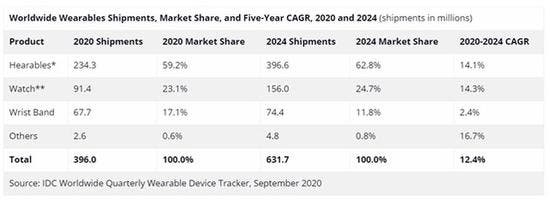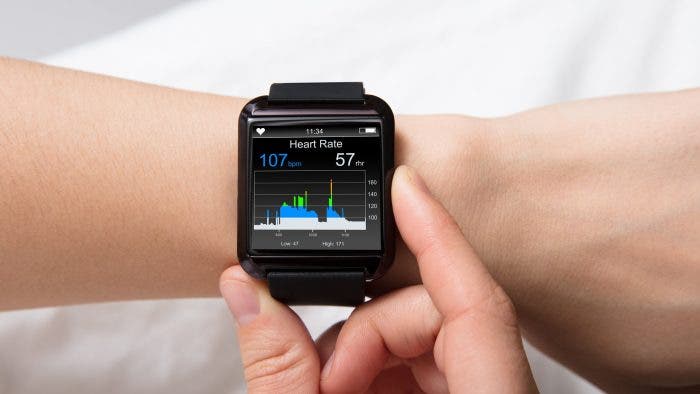According to IDC’s latest data, by 2020, global shipments of wearable devices are expected to reach 396 million units. This is an increase of 14.5% from 345.9 million units in 2019. Looking ahead, IDC predicts that a five-year compound annual growth rate (CAGR) of 12.4% will reach 637.1 million units by 2024.

Although affected by the epidemic, suppliers have reduced their production scale, the demand for wearable devices has remained stable. The market demand for audible equipment is close to record levels. This is enough to offset the slight drop in demand for smartwatches and wristbands. This trend will continue in the second half of 2020. With the launch of new products (including headphones, smartwatches and wristbands) from multiple suppliers, the wearable device market should reach nearly 400 million units this year.
Also Read: IDC: China Wearable Device Market Quarterly Tracking Report – Q2, 2020
In addition to devices, one of the trends worth paying attention to is the emergence of services that complement wearable devices. Apple’s recently announced Fitness+, Amazon’s new Halo and Fitbit’s Fitbit Premium provide users with health and fitness content (that is, guided exercises, guidance, and dietary recommendations) while integrating data from wearable devices. Several other companies have taken a different approach, showing corporate clients how to distance their employees from their bodies and spot early signs of underlying diseases. These and other services will increase the demand for wearable devices.
Main Players In Wearable Device Market
In the entire forecast, wearable devices will account for most of the shipments. And the market growth rate compound annual growth rate is 14.1%. The combination of multiple driving factors will maintain considerable growth: the list of suppliers with a growing number of devices continues to grow; smartphones abandon the 3.5 mm headphone jack in favor of Bluetooth connectivity; lower prices; connectivity to home and work IoT systems.
The watch category composed of smartwatches and traditional watches has the highest compound annual growth rate of 14.3%. As Google’s WearOS acquires FitbitOS to enhance its health and fitness products and new supplier partners, the smartwatch market will see changes in its operating system (OS) landscape. Samsung’s Tizen will gradually gain share with its fitness and productivity-driven Galaxy watch. Apple’s watchOS is the most important. And it will benefit from the launch of the new Watch SE that sits between high-end and entry-level devices. At the same time, basic watches will benefit from children’s connected watches and watches equipped with hybrid power and GPS.
Smartbands will grow slowly and shipments will grow at a compound annual growth rate of 2.4%. The main driving force of the smartbands is still the cheap step count and calorie counter.
Follow Gizchina.com on Google News for news and updates in the technology sector.





